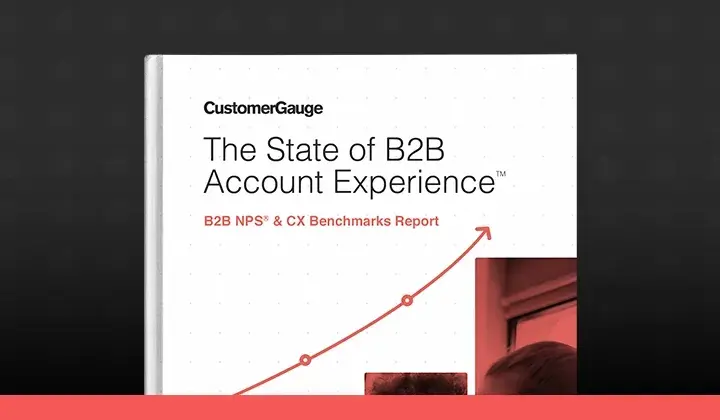I’m sure you’ve heard the phrase “It’s about the journey, not the destination.” Before you say “spare me hippie,” reflect on that statement for a minute. So often companies, particularly multi-channel retailers, are looking for that purchase destination when it comes to the customer journey. Here's the thing though: your job doesn't end when the customer walks through the door.
Beyond acquisitions, retailers need to invest in their repeat customers. Understanding whether a customer is coming back (or is lost to churn) in addition to the experience pre- and post-purchase is vital. To do this, retailers must analyze the experience within the customer journey by tapping into the Voice of Customer (VoC).
The Retail Customer Journey—Not a Straight Line
As in any journey, the traveled road forks. In the same way, when discussing the customer journey within retail, you cannot think of the path as a straight line between points "A" and "B". Not all customers start off in the same place. In-store and online customer journeys have different touch points, not to mention phone-based purchases, catalog purchases, etc.
However, it seems many retailers still desperately struggle to create a consistent customer experience across these different channels. In fact, according to SAP, retail companies lose $65 billion in possible revenue through inconsistent customer experience across channels. For example, when buying something in-store and interacting with humans is more painful than the simplicity of ordering something online—sound familiar?

While there will always be some slight variation to every retail customer journey, typically, at least some of the following stages apply:
Awareness > Research > Purchase > Shipping & Returns > Feedback > Repurchase
The example customer journey we gave is still rather deceiving in its illustration. The last stage, Repurchase, is essentially a restart of the cycle, where customers are reeled back in to the Awareness stage. For some retailers, it is difficult knowing just how to get customers to this stage, as they are too focused on bringing in new acquisitions. Despite the fact that it is cheaper to sell to your existing customer base, many retailers still down take retention or churn seriously (in fact 44% of executives down know their own retention rate). When mapping the customer journey, you need to fully consider the Repurchase phase. Part of transitioning customers into this phase is first understanding whether they're coming back. That "why" behind "why" customers leave is where the Feedback stage plays such a vital role.
The only way to get a clear understanding of customer experience within the customer journey is to tap into the VoC. In fact, customer feedback is the best business advise you can get. By conducting surveys, such as CES or Net Promoter® surveys, you can determine pain points in your business processes and find areas for improvement as well as identify those "detractor" customers you are in danger of losing forever.
Let's Talk Touch Points
Within the customer journey, there are multiple touch points for each individual stage. For example, the checkout process on your website, the customer service person on the phone, etc. Multi-channel retailers have a plethora of touch points within channels.
Part of customer journey mapping is identifying the touch points in order to optimize them. Some companies, like Net Promoter powerhouse Apple, have hacked each touch point to improve the customer experience in some way, from the packaging on their products to their easy-to-navigate website.

The point here is to identify your channels and stages, and then define areas where you and the customer cross paths. During the Awareness stage, for example, a lot of Marketing effort is involved in both web, in-store, and print:
- Store front displays
- PPC on Facebook and LinkedIn
- Subway ads
- Magazine layouts
- Email campaigns
CX gurus like Apple learned how to heighten the experience for customers at each of these points by surveying their customer base and learning what their customers want and need.
Surveying the Customer Journey Experience
There are two types of surveys companies can use in conjunction with their customer journey map: relationship and transactional. Relationship surveys allow businesses to understand what customers think, overall, about about their brand/product/service. Transactional surveys focus on the customer experience at specific touch points in the customer journey. A transactional survey would ask a question such as:
"Based on your recent online experience with booking your holiday, how likely are you to recommend the experience to your friends, family or business associates?”However, you can still learn a lot about different facets of your business from your relationship surveys by using drivers. Drivers allow you to focus on specific aspects of the experience, similar to transactional surveys. These inform the Net Promoter Score customers respond with.

In the example above, we have a travel agency that includes two different kinds of relationship surveys: one to detractors/passives and one to promoters. With this method, you can hear from your critics, brand advocates, and those who feel "meh" about your brand. This range means you can get a 360 degree view of what went right, what went horribly wrong, and where things fizzled for your customers.
Conclusion
Mapping out your customer journey is something that should be reevaluated every couple of years as your company changes. In the same vein, ensuring your surveys remain relevant as well means you'll have accurate insight moving forward.
If you'd like to learn more about the surveying process, check out our eBook, Mastering Omni-Channel Customer Experience with Net Promoter®.


